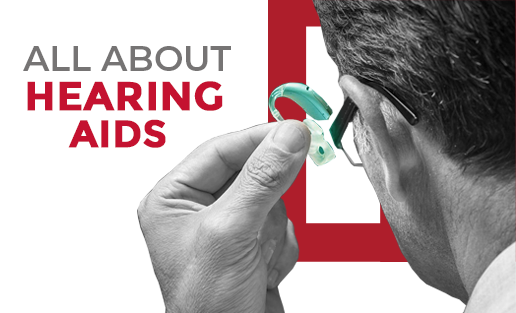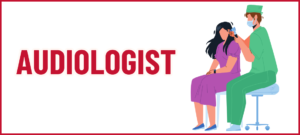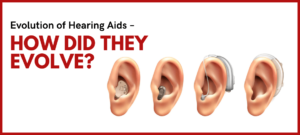

Hearing is an essential activity in our lives. We must hear well to be alert, to respond, and to communicate our thoughts. When our ability to hear is affected, it interferes with our daily lives, both personally and professionally, at different levels. To resolve that, different types of hearing aids are used to help enhance the quality of hearing in cases of Hearing Loss. However, it is not generic, and one cannot use it as it pleases.
It is useful only when it treats your specific hearing aid types, which may vary from person to person depending on many parameters. In this blog, we will explore all you need to know about different types of Hearing Aid to be aware and make an informed decision. Let’s begin!
What is a Hearing Aid?
Hearing Aid is a small electronic medical device developed and designed to improve hearing by making sound audible to a person. You need to wear it in or behind your ear as per the type you use.
A hearing aid is not a treatment to cure hearing loss.It is an aid to make some sounds louder so that even with hearing loss, a person can listen, communicate, and do his daily activities properly.
It is useful in noisy and quiet surroundings. It can be helpful in different types of hearing loss, such as sensorineural, conductive, single-ear deafness, etc.
How Do Different Types of Hearing Aid Work?

Different types of hearing aids have three essential parts: a microphone, an amplifier, and a speaker.
The hearing aid receives sound waves through a microphone, which transforms them into electrical signals and then sends them to the amplifier in it. The amplifier increases the power of signals and sends it to your ear using the speaker in it.
Hearing aid types magnify the sound vibrations entering into the ear. The working hair cells detect more significant vibrations and convert them into the neural signals passed along to the brain.
The more damage to the person’s hair cells, the more severe is the hearing loss and greater amplification needed to cover up the difference.
However, the amplification power has a practical limit in any hearing aid. If the inner ear is damaged severely, even the significant vibrations can not be converted into neural signals with a hearing aid, making it ineffective.
What are the different types of Hearing Aids?
According to the style of use
Types of hearing aids in terms of their style of use can be categorized as below. i.e.,

Behind-the-ear (BTE) Hearing Aid:
Behind-the-ear (BTE) hearing aid consists of a hard plastic case worn behind the ear and connected to a plastic earmold to fit inside the outer ear. The case holds the electronic parts behind the ear. Sound can travel from the hearing aid through the earmold into the ear. People with mild to profound hearing loss of all ages can use BTE hearing aids.
A new kind of BTE hearing aid is open-fit and small to fit behind the ear completely, with just a narrow tube inserted into the ear canal, enabling it to remain open.
For this reason, open-fit hearing aids might be the right choice for people who experience a continuous buildup of earwax, since this is less likely to be damaged by such substances.
Besides, some people may prefer the open-fit hearing aid because their perception of their voice does not sound “plugged up” with it.
This style is often preferred for young children because it can accommodate various earmolds, which you have to replace as the child grows. Also, BTE aids are easy to clean and handle and are relatively sturdy.
Mini BTE or on-the-ear Hearing aids:
It is a new type of BTE aid that also fits behind/on the ear but is smaller. It uses a skinny, almost invisible tube to connect the hearing aid to the ear canal.
Mini BTEs may have a comfortable earpiece for insertion, i.e., open fit or use a traditional earmold. It allows reduced occlusion or “plugged up” sensations in the ear canal, increases comfort, reduces feedback, and addresses the cosmetic concerns for many users.
In-the-ear (ITE) Hearing aids:

In-the-ear (ITE) hearing aids can completely fit inside the outer ear and used for mild to severe cases of hearing loss. Its case is made of hard plastic to hold the electronic components. Some ITE hearing aids come with certain pre-installed features like a telecoil.
A telecoil is a tiny magnetic coil that may allow users to receive sound through the circuitry of hearing aid instead of its microphone. It helps you better to understand telephonic conversations better.
It can also help people understand in public facilities who install some specialized sound systems like induction loop systems. Generally, many schools, airports, churches, and auditoriums have induction loop systems on the premises.
ITE is not suggested for young children as one needs to replace the casings often as the ear grows. It is, however, more comfortable to handle than the smaller hearing aids for most users.
Canal Hearing Aids:

Canal Hearing Aids are the ones that fit into the ear canal, as the name suggests.
It is available in 2 styles for mild to moderately severe hearing loss. i.e.,
- In-the-canal (ITC) hearing aid – Made to fit the size and shape of a person’s ear canal.
- Completely-in-canal (CIC) hearing aid – Almost hidden in the ear canal.
As they are so small, it may seem challenging for a person to remove or adjust frequently. Besides, canal aids offer less space for batteries or any additional devices like a telecoil.
The reduced size limits their power and volume. Hence, these are not recommended for young children or people with severe to profound hearing loss usually. These are the smallest hearing aids available that offer cosmetic and some listening advantages too.
According to the type of signal processing methods used
Hearing aids in terms of their mode of working, depending on the electronic signal used, is categorized below. I.e.,
Analog hearing aids

It makes continuous sound waves louder by converting to electrical signals and amplifying. It amplifies all the sounds, whether speech and noise, in the same way.
Analog hearing aids can be custom-built to meet specific needs mentioned by audiologists for each patient.It uses a microchip that allows programmed settings to be adjusted for different types of hearing aids or listening environments, like a minimally noisy place such as the library, a noisy place such as a restaurant, or a large area such as a soccer field.
Analog hearing aid, if programmable, can store various programs for changing environments, and you can switch among them by pushing a button on it as the listening environment changes. It is not as popular as it used to be even if it is less expensive.
Digital hearing aids

It has all the features of an analog programmable hearing aid, but it converts the sound waves to digital signals to produce an exact duplication of the sound. Chips in the digital hearing aid can analyze speech and environmental sounds.
It can perform more complex processing of the speech and other sounds during the amplification process to improve performance in some situations. It gives greater flexibility in programming so that the sound transmitted to match the specific needs of a person with hearing loss. It also provides multiple program memories.
Current technology also provide
1) Rechargeability not requiring the use of batteries
2) Bluetooth connectivity allowing to connect a phone and other gadgets wirelessly to hearing aids
Many individuals who need types of hearing aids according to their convenience get advanced choice features of digital technology these days.
What questions to ask while buying a hearing aid?
Ask your audiologist these important questions before buying a hearing aid:
- What is a suitable style and performance level to meet once hearing needs
- What features are most useful to me? And asses the user’s ability to handle technology
- What is the cost of the hearing aid? Is it justified with benefits?
- Does it come with a trial period? (Most manufacturers give a 30 to 60 days)
- What is the warranty period? Does it have an extension option? Does it cover the repair and maintenance?
- Would loaner aids be provided if repairs are needed?
What are the common problems with Hearing Aid?
Some of the common problems to wear new hearing aid are:
- The hearing aid is feeling uncomfortable. It is common to find it slightly uncomfortable at first. Check with your audiologist if you need some adjusting.
- The voice sounds loud. The plugged-up sensation may cause a user’s voice to seem louder inside the head, called the occlusion effect. It is familiar with new users. Check if a correction is possible by the audiologist.
- Get feedback from the hearing aid. A sound similar to whistling sound is typical if a hearing aid does not fit well or clogged by fluid etc. Get it checked to adjust.
- Hear background noises. A hearing aid does not filter as per you what you want to hear and not. However, talk to your audiologist if it seems like an error.
- A buzzing sound while using a cell phone occurs. Because of the radiofrequency interference by digital cell phones, it may cause some problems. Take your phone along to check when you buy a hearing aid to avoid it.

How to adjust with the Hearing Aid?
- Hearing aids take some time and much patience to use seamlessly.
- If you wear your hearing aids regularly, it will help you adjust to them.
- You should become familiar with its features and try them out with your audiologist.
- Practice putting in and taking out, cleaning it, identifying right and left, and battery replacing along with your audiologist.
- Try in different listening environments to adjust the volume and program.
- Keep working with your audiologist for a while until you are comfortable and satisfied using it.

How to take care of a hearing aid?
Proper maintenance can extend the life of your hearing aid. Do the below.
- Keep your hearing aid always away from heat and moisture.
- Clean the hearing aid as instructed only.
- Avoid using any hair care products wearing the hearing aid.
- Please turn off the hearing aid when not in use.
- Replace the dead batteries immediately.
- Keep the batteries and small hearing aids away from children and pets always.

How do I choose the Right Hearing Aid?
The hearing aid is not for everyone to use.
- If you notice any symptoms leading to hearing loss and are confused, seek professional help immediately.
- A proper diagnosis can help you detect the cause and choose the right fit if, at all, a hearing aid will be beneficial in your case.
- You should visit an Otolaryngologist (a physician specializing in ear, nose, and throat disorders to investigate the cause of hearing loss) or Audiologist (A hearing health professional who can identify and measure hearing loss and perform a hearing test to assess the type and degree of damage).
- You can also try our online hearing test for easy diagnosis before going for a formal consultation.
- Reach out to us and share this blog with your loved ones if you find it helpful.









